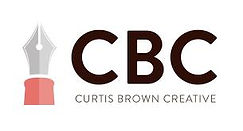.png)
Getting Bi is a half-hour teen comedy with eight episodes per season.
Logline:
When Ava comes out as bisexual, she finds herself dumped by her girlfriend and rejected by her lesbian mums. But when the school's queen-bee, Lucy, turns out to be a closeted bisexual, Ava must choose where her loyalty lies if she's to run for Head-Girl and survive the social stakes of high school.
Recognition:

Selected as one of 15 writers to take part in Curtis Brown Creative's "Writing an Original TV Drama Serial" course to develop my TV show, Getting Bi.

Selected onto the "TV Writing: Mapping Your Series" course run by the Sundance Institute, in partnership with the Sundance Film Festival.

Quarterfinalist in Screencraft's Comedy Screenplay Competition.
Tone:
Tonally we're in the area of HEARTSTOPPER meets SEX EDUCATION meets NEVER HAVE I EVER, meaning Getting Bi is youthful, energetic, colourful, has heart and feels real.



Why this topic?
Whilst TV has made strides in its representation of LGBTQ+ individuals, the types of queerness represented has been limited to gay and lesbian narratives. As a result, bisexuality has either been completely erased on TV or negatively represented, stereotyped or viewed as a "phase."
Whilst shows like HEARTSTOPPER and SEX EDUCATION do have bisexual characters, they are limited to white male individuals.
Getting Bi seeks to fill this gap with its strong and diverse female-led cast, hoping to add to the ever-growing positive representation of the LGBTQ+ community by offering a heart warming portrayal of bisexual adolescence.
Why Me?
I was inspired to create characters, such as Ava & Lucy, as I lived their experiences. Like Lucy, I grew up in a religious community where homosexuality was heavily frowned upon. So, throughout my teenage years, I suppressed any and all feelings I had towards girls and focused on my feelings for boys. However, like Ava, I couldn't deny my feelings and started to discover my bisexuality.
Having struggled so much with my identity, I wanted to create a positive representation of bisexuality for young people who might be going through the same thing. I wanted to give them the bisexual role models that I never had growing up.
I also hope to be a positive role model within the bisexual community, as I want to encourage greater representation of such individuals in the TV industry both in front of and behind the camera.